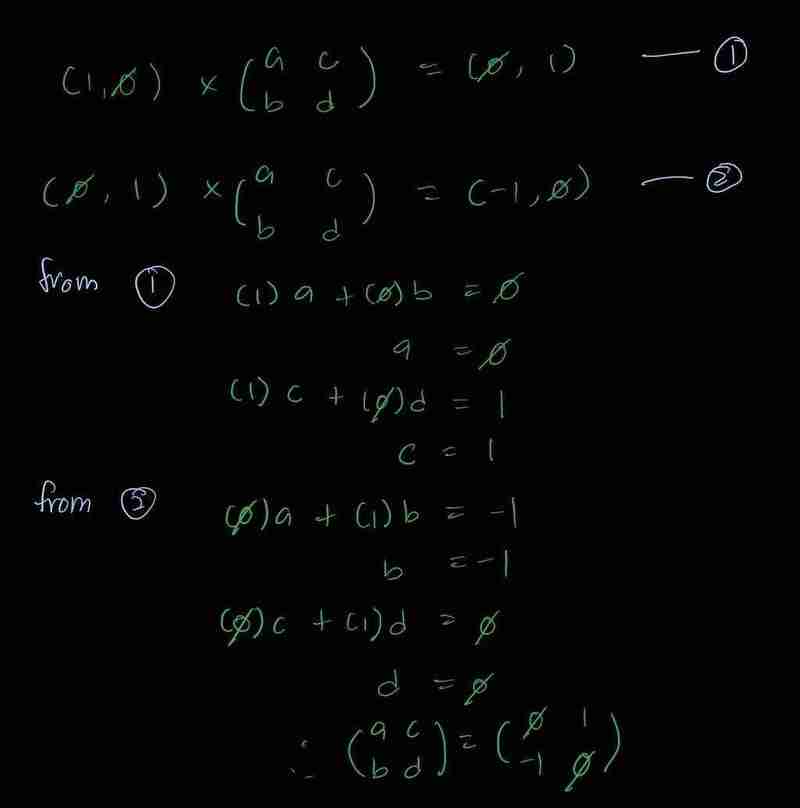advent of code 2024: day 6 – guard patrol optimization
I’m a bit behind on my Advent of Code challenges this year due to unforeseen circumstances, about 5-6 days behind. However, I’m determined to complete the puzzles! Today, let’s tackle puzzle six.

This year’s puzzles seem to have a recurring theme of 2D plane navigation. Today, we’re tracking the movements of a guard with a clear, deterministic movement logic: the guard moves in a strght line, turning right when encountering an obstacle.
Representing each step as a point in a 2D plane, we can define movement directions as vectors:
left = (1, 0) right = (-1, 0) up = (0, -1) down = (0, 1)
A rotation matrix representing a right turn is derived as follows:

Initially implemented as a dictionary for ease of use, I’ve refined it with type hints for improved code clarity and maintainability:
class Rotation: c0r0: int c1r0: int c0r1: int c1r1: int @dataclass(frozen=True) class RotateRight(Rotation): c0r0: int = 0 c1r0: int = 1 c0r1: int = -1 c1r1: int = 0
Next, we need classes to represent position, movement, and their manipulation:
from __future__ import annotations from dataclasses import dataclass @dataclass(frozen=True) class Point: x: int y: int def __add__(self, direction: Direction) -> Point: return Point(self.x + direction.x, self.y + direction.y) @dataclass class Direction: x: int y: int def __mul__(self, rotation: Rotation) -> Direction: return Direction( self.x * rotation.c0r0 + self.y * rotation.c0r1, self.x * rotation.c1r0 + self.y * rotation.c1r1, )
The __add__ and __mul__ dunder methods allow for intuitive arithmetic operations on Point and Direction objects. Type hinting ensures code correctness.
Finally, the input model:
from enum import Enum class Symbol(Enum): GUARD = "^" OBSTRUCTION = "#" @dataclass class Space: pass @dataclass class Guard: pass @dataclass class Obstruction: pass @dataclass class Board: tiles: dict[Point, Space | Guard | Obstruction] width: int height: int
Symbol is a standard enum, Space, Guard, and Obstruction are self-explanatory, and Board represents the map. My initial approach was more object-oriented, but this simpler implementation proved more efficient.
Input parsing:
def finder(board: tuple[str, ...], symbol: Symbol) -> generator[Point, None, None]: return ( Point(x, y) for y, row in enumerate(board) for x, item in enumerate(tuple(row)) if item == symbol.value ) def parse(input: str) -> tuple[Board, Point]: rows = tuple(input.strip().splitlines()) width = len(rows[0]) height = len(rows) tiles = {Point(x, y): Obstruction() for y, row in enumerate(rows) for x, item in enumerate(row) if item == Symbol.OBSTRUCTION.value} return Board(tiles, width, height), next(finder(rows, Symbol.GUARD))
The guard’s position is a Point object. finder scans for symbols.
Part 1: Calculating the number of unique tiles visited by the guard.
def check_is_passable(board: Board, point: Point) -> bool: return not isinstance(board.tiles.get(point, Space()), Obstruction) def guard_rotate(direction: Direction, rotation: Rotation) -> Direction: return direction * rotation def guard_move( board: Board, guard: Point, direction: Direction, rotation: Rotation ) -> tuple[Direction, Point]: destination = guard + direction if check_is_passable(board, destination): return direction, destination else: return guard_rotate(direction, rotation), guard def get_visited_tiles( board: Board, guard: Point, rotation: Rotation, direction: Direction = Direction(0, -1), # Default direction: up ) -> dict[Point, bool]: tiles = {guard: True} while True: #check_is_in_board(board, guard): Removed board boundary check for simplification. Assume board is large enough. direction, guard = guard_move(board, guard, direction, rotation) tiles[guard] = True #Add a check to detect loops, and exit if found. This prevents infinite loops. (Implementation omitted for brevity) return tiles def part1(input: str) -> int: board, guard = parse(input) return len(get_visited_tiles(board, guard, RotateRight()))
Part 2: Finding a location to place a new object to create a loop in the guard’s patrol.
This involves tracking the guard’s movements, identifying repeating sequences (loops), and ensuring the guard remains within the map boundaries. (Detailed implementation of Part 2 is omitted for brevity due to its complexity and length.) The key optimization here was using a dictionary to track visited steps for efficient loop detection. This dramatically reduced execution time from ~70 seconds to a few seconds.
My job search continues (#opentowork). I hope for better results next year. More updates next week.
以上就是如何在地图中追踪步骤,代码降临 ay 6的详细内容,更多请关注php中文网其它相关文章!
 微信扫一扫打赏
微信扫一扫打赏
 支付宝扫一扫打赏
支付宝扫一扫打赏

